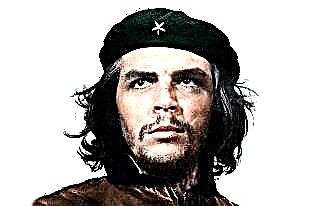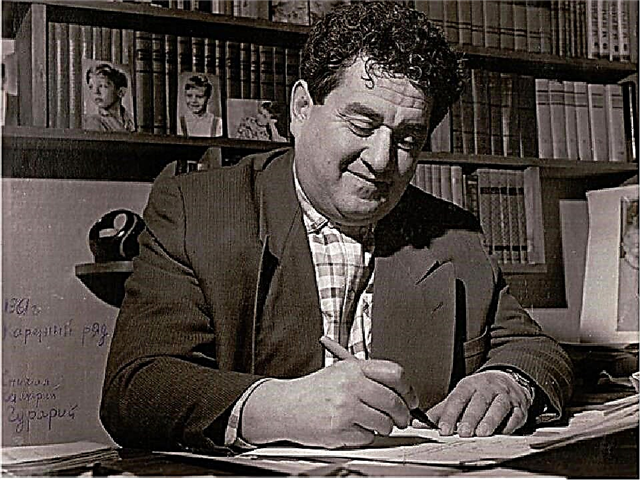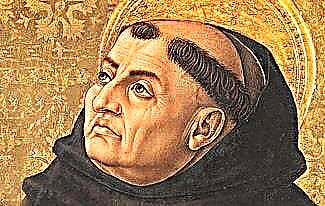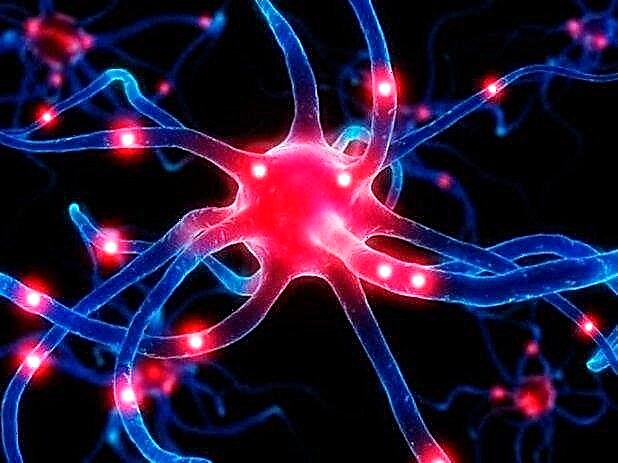Armand Jean du Plessis, Duke de Richelieu (1585-1642), also known as Cardinal Richelieu or Red Cardinal - Cardinal of the Roman Catholic Church, aristocrat and statesman of France.
He served as secretaries of state for military and foreign affairs in the period 1616-1617. and was head of government (first minister of the king) from 1624 until his death.

There are many interesting facts in the biography of Cardinal Richelieu, which we will talk about in this article.
So, before you is a short biography of Richelieu.
Biography of Cardinal Richelieu
Armand Jean de Richelieu was born on September 9, 1585 in Paris. He grew up and was brought up in a wealthy and educated family.
His father, François du Plessis, was a senior judicial officer who served under Henry 3 and Henry 4. His mother, Suzanne de La Porte, came from a family of lawyers. The future cardinal was the fourth of five children of his parents.
Childhood and youth
Armand Jean de Richelieu was born a very frail and sickly child. He was so weak that he was baptized only 7 months after birth.
Because of his poor health, Richelieu rarely played with his peers. Basically, he devoted all his free time to reading books. The first tragedy in the biography of Armand happened in 1590, when his father passed away. It is worth noting that after his death, the head of the family left a lot of debts.
When the boy was 10 years old, he was sent to study at the Navarre College, designed for the children of aristocrats. Studying was easy for him, as a result of which he mastered Latin, Spanish and Italian. During these years of his life, he showed great interest in the study of ancient history.
After graduating from college, despite his poor health, Armand Jean de Richelieu wanted to become a military man. To do this, he entered the cavalry academy, where he studied fencing, horse riding, dancing and good manners.

By that time, the elder brother of the future cardinal, named Henri, had already become a nobleman of parliament. Another brother, Alphonse, was to take the post of bishop in Luzon, granted to the Richelieu family by order of Henry III.
However, Alphonse decided to join the Cartesian monastic order, as a result of which Armand was to become bishop, whether he wanted it or not. As a result, Richelieu was sent to study philosophy and theology at local educational institutions.
Receiving the ordination was one of the first intrigues in Richelieu's biography. Arriving in Rome to see the Pope, he lied about his age in order to be ordained. Having achieved his, the young man simply repented of what he had done.
At the end of 1608 Armand Jean de Richelieu was promoted to bishop. An interesting fact is that Henry 4 called him nothing else but “my bishop”. It goes without saying that such closeness with the monarch haunted the rest of the royal retinue.
This led to the end of Richelieu's court career, after which he returned to his diocese. At that time, owing to the wars of religion, the Luson Diocese was the poorest of all in the area.
However, thanks to the carefully planned actions of Cardinal Richelieu, the situation began to improve. Under his leadership, the cathedral and the bishop's residence were rebuilt. It was then that the man was able to actually show his own reformatory abilities.
Politics
Richelieu was indeed a very talented politician and organizer, having done a lot for the development of France. That only is the praise of Peter 1, who once visited his tomb. Then the Russian emperor admitted that to such a minister as the cardinal was, he would give half a kingdom if he helped him to rule the other half.
Armand Jean de Richelieu participated in many intrigues, seeking to possess the information he needed. This led to his becoming the founder of Europe's first major espionage network.
Soon, the cardinal becomes close to Marie de Medici and her favorite Concino Concini. He managed to quickly gain their favor and get the post of minister in the cabinet of the Queen Mother. He is entrusted with the post of Deputy of the States General.

During that period of his biography, Cardinal Richelieu showed himself as an excellent defender of the interests of the clergy. Thanks to his mental and oratorical abilities, he could extinguish almost any conflicts that arise between the representatives of the three estates.
However, due to such a close and trusting relationship with the monarch, the cardinal had many opponents. Two years later, 16-year-old Louis 13 organizes a conspiracy against his mother's favorite. It is interesting that Richelieu knew about the planned assassination attempt on Concini, but nevertheless preferred to stay on the sidelines.
As a result, when Concino Concini was assassinated in the spring of 1617, Louis became king of France. In turn, Maria de Medici was sent into exile at the castle of Blois, and Richelieu had to return to Luçon.
After about 2 years the Medici manages to escape from the castle. Once free, the woman begins to ponder a plan to overthrow her son from the throne. When this becomes known to Cardinal Richelieu, he begins to act as an intermediary between Mary and Louis 13.
A year later, mother and son found a compromise, as a result of which they signed a peace agreement. An interesting fact is that the treaty also mentioned the cardinal, who was allowed to return to the court of the French monarch.
This time Richelieu decides to get closer to Louis. This leads to the fact that he soon becomes the first Minister of France, holding this post for 18 years.
In the minds of many people, the meaning of the cardinal's life was the desire for wealth and unlimited power, but this is not at all the case. In fact, he did his best to ensure that France developed in a variety of areas. Although Richelieu belonged to the clergy, he was actively involved in the political and military affairs of the country.
The cardinal took part in all the military confrontations that France then entered. To increase the combat power of the state, he made a lot of efforts to build a combat-ready fleet. In addition, the presence of the fleet contributed to the development of trade relations with various countries.
Cardinal Richelieu was the author of many social and economic reforms. He abolished dueling, reorganized the postal service, and created posts that were appointed by the French monarch. In addition, he led the suppression of the Huguenot uprising, which posed a threat to Catholics.

When the British fleet occupied part of the French coast in 1627, Richelieu decided to personally direct the military operation. A few months later, his soldiers managed to take control of the Protestant fortress of La Rochelle. About 15,000 people died from hunger alone. In 1629, the end of this religious war was proclaimed.
Cardinal Richelieu advocated tax cuts, but after France entered the Thirty Years' War (1618-1648) he was forced to raise taxes. The winners of the protracted military conflict were the French, who not only showed their superiority over the enemy, but also increased their territory.
And although the Red Cardinal did not live to see the end of the military conflict, France owed its victory primarily to him. Richelieu also made a significant contribution to the development of art, culture and literature, and people of different religious beliefs acquired equal rights.
Personal life
The wife of the monarch Louis 13 was Anne of Austria, whose spiritual father was Richelieu. The cardinal loved the queen and was ready for much for her.
Wanting to see her as often as possible, the bishop quarreled the spouses, as a result of which Louis 13 practically stopped communicating with his wife. After that, Richelieu began to draw closer to Anna, seeking her love. He realized that the country needed an heir to the throne, so he decided to "help" the queen.
The woman was outraged by the cardinal's behavior. She understood that if something suddenly happened to Louis, then Richelieu would become the ruler of France. As a result, Anna of Austria refused to be close to him, which undoubtedly insulted the cardinal.
Over the years, Armand Jean de Richelieu intrigued and spied on the queen. Nevertheless, it was he who became the person who was able to reconcile the royal couple. As a result, Anna gave birth to 2 sons from Louis.
An interesting fact is that the cardinal was a passionate cat lover. He had 14 cats, with whom he played every morning, putting off all state affairs for later.
Death
Shortly before his death, Cardinal Richelieu's health deteriorated sharply. He often fainted, struggling to continue working for the good of the state. Soon, doctors discovered purulent pleurisy in him.
A couple of days before his death, Richelieu met with the king. He told him that he saw Cardinal Mazarin as his successor. Armand Jean de Richelieu died on December 4, 1642 at the age of 57.
In 1793, people broke into the tomb, destroyed Richelieu's tomb and tore the embalmed body to pieces. By order of Napoleon III in 1866, the remains of the cardinal were solemnly reburied.
The merits of Cardinal Richelieu before France were appreciated by one of his principled opponents and outstanding thinkers, François de La Rochefoucauld, the author of philosophical and moralistic works:
“No matter how rejoicing the enemies of the Cardinal, when they saw that the end of their persecutions had come, what followed with no doubt showed that this loss caused the most significant damage to the state; and since the Cardinal dared to change his form so much, only he could successfully maintain it if his rule and his life were to be longer. Until that time, no one had comprehended the power of the kingdom better, and no one was able to unite it completely in the hands of the autocrat. The severity of his reign led to an abundant shedding of blood, the nobles of the kingdom were broken and humiliated, the people were burdened with taxes, but the capture of La Rochelle, the crushing of the Huguenot party, the weakening of the Austrian house, such greatness in his plans, such dexterity in their implementation should take up over rancor individuals and to exalt his memory with the praise it justly deserves.
François de La Rochefoucauld. Memoirs
Richelieu Photos



















